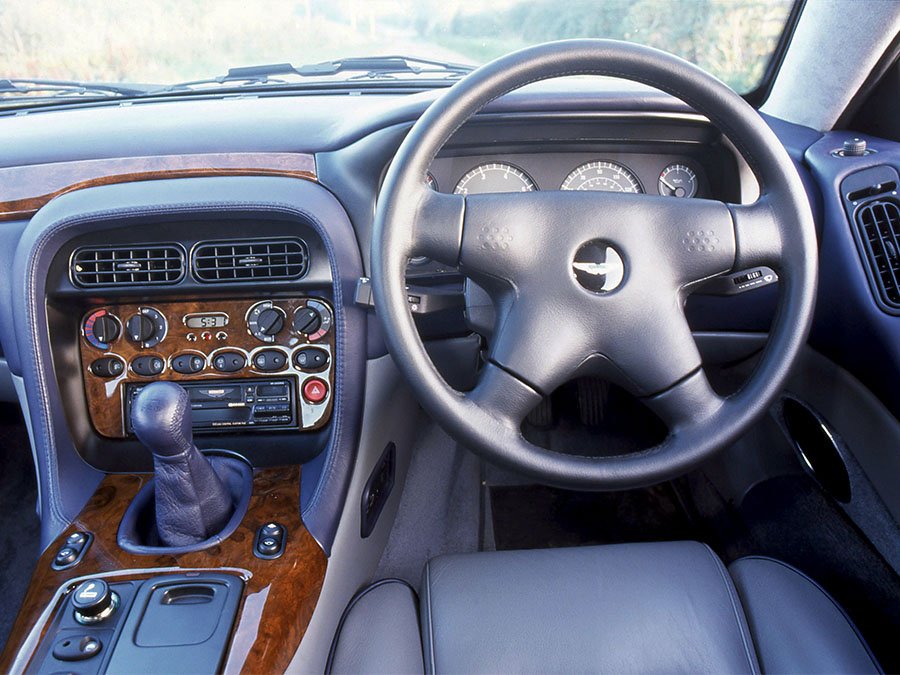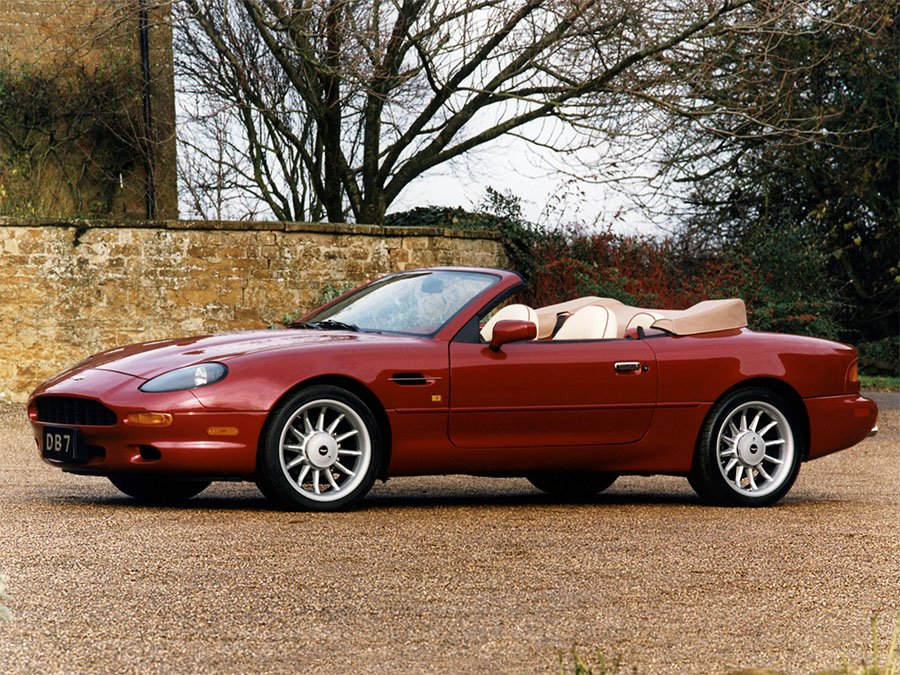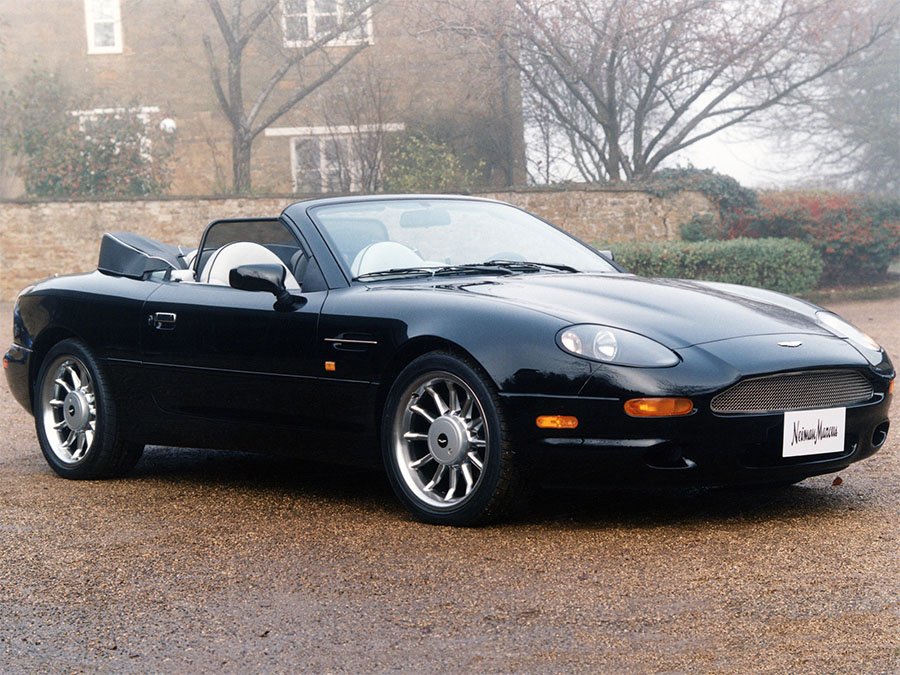Guide: Aston Martin DB7 - a Historical & Technical Appraisal
/BACKGROUND
In September 1987, the Ford Motor Company purchased a 75% stake in Aston Martin Lagonda from Victor Gauntlett, Tim Hearley and Peter Livanos. The American firm then took full control in 1991.
At the time of Ford’s initial investment, Aston Martin were well advanced with a successor to their long-running V8 model. The resultant Virage entered production in spring 1989 and was another low volume hand-built GT typical of Aston Martin.
When the Virage was launched, the market for high end motor cars was red hot and Aston Martin soon found themselves with a two year waiting list. However, when global economies entered a prolonged nosedive in the latter half of 1990, Virage sales quickly began to dry up.
In October 1991, Walter Hayes replaced Victor Gauntlett as Aston Martin Chairman. By this time, it was obvious that the firm would have to increase production in order to survive.
A new flagship twin supercharged Vantage was in the pipeline, but what Aston Martin really needed was a less expensive entry level model that could retail at around two thirds the price of the Virage. It was hoped such a machine would provide more consistent sales at the rate of around 500-600 per year.
In November 1989, Ford had purchased another prestigious British car manufacturer: Jaguar. Within a few months, Ford decided to cancel the XJS replacement on cost grounds.
At this stage, the abandoned XJS replacement was taken on by Tom Walkinshaw Racing (TWR). TWR was best known for the myriad racing and engineering projects it managed on behalf of Jaguar.
TWR unilaterally carried out a redesign of the XJS replacement (dubbed XJ41 / XJ42 and also known as F-type) which was then presented to Jaguar. Unfortunately, Jaguar management rejected the proposal. However, when Walter Hayes found out about TWR’s proposal, he thought it could be exactly what Aston Martin needed.
As a result, Hayes commissioned TWR to reconfigure that concept as an Aston Martin.
The revised machine, dubbed NPX, was subsequently approved. TWR were then asked to design, develop and type approve the new car from their their Kidlington factory in Oxfordshire.
A prototype was ready by November 1992 and the new car, now dubbed DB7, was launched at the Geneva Motor Show in March 1993.
Despite having been created on a shoestring budget, the DB7 garnered an extremely positive response.
Because Aston Martin’s Newport Pagnell factory did not have the production capacity required, the DB7 was built at the Bloxham factory in Oxfordshire that had originally been constructed to assemble the Jaguar XJ220. DB7 engines were built by TWR.
Production started in September 1994 and the DB7 ultimately became the most commercially successful Aston Martin yet.
CHASSIS
The DB7’s was based on a steel semi-monocoque bodyshell with a 2591mm wheelbase (identical to that of the Jaguar XJS).
Independent suspension was via double wishbones, coil springs and gas-filled Bilstein dampers. Front anti-dive geometry was employed along with a front anti-roll bar. A rear anti-roll bar was fitted from chassis 100172.
Front brakes were 284mm ventilated discs with four-piston calipers. Solid 295mm discs were installed at the rear along with sliding aluminium calipers. Teves MkII ABS software was employed.
New 8 x 18-inch Speedline alloy wheels were shod with Bridgestone tyres.
Power-assisted steering was fitted as standard.
An 89-litre fuel tank was fitted over the rear axle.
ENGINE / TRANSMISSION
In the engine bay was a front longitudinally-mounted all-alloy 3.3-litre straight six based on Jaguar’s AJ6 power unit.
Most significantly, TWR added an intercooled Eaton M90 Roots-type supercharger driven by a toothed belt from the dual overhead camshafts.
The wet-sump straight six also featured four valves per cylinder, state-of-the-art Zytek engine management and a fully catalysed stainless steel exhaust system.
Displacement was 3239cc thanks to a bore and stroke of 91mm and 83mm.
With a compression ratio of 8.3:1, the TWR engine produced a peak output of 335bhp at 5500rpm and 360lb-ft at 3000rpm.
Two gearbox options were offered: a standard Getrag 290 five-speed manual or an optional General Motors 4L80-E four-speed automatic. Transmission was through a single-plate clutch and GKN Powerlock limited-slip differential.
BODYWORK
Arguably the biggest single factor that ensured the DB7’s success was its handsome styling by Ian Callum and Keith Helfet.
Described at the time as the most beautiful car in production, the perfectly proportioned DB7 fused elegant details with the kind of soft curves that came to define the 1990s automotive scene.
At the front, pop-up headlights were eschewed in favour of fixed lenses beneath an oval glass cover. The bumper housed a traditional Aston Martin-shaped grille above a trio of smaller intakes. Thanks to the contoured apron there was no need for a chin spoiler.
Further up, a discrete power bulge gave definition to the enormous hood. Behind each front wheel was a stylised intake that evoked memories of the DB7’s esteemed predecessors.
Muscular rear fenders swept back to a tail that offered a generous amount of luggage space. A single piece rear bumper housed a single fully shrouded exhaust pipe per side.
Tail lights were sourced from the Mazda 323 along with the door handles. The exterior mirrors were imported from the Series 2 Citroen CX.
Thanks to an absence of downforce-inducing spoilers, the DB7 had an extremely impressive drag coefficient of just 0.31.
To save weight, composite panels were used for the nose, hood, front wings, sills, boot lid and rear bumper. The rest of the body was fashioned mostly from steel.
Cars bound for the US market had additional side marker lights incorporated down each flank.
INTERIOR
Although the DB7’s cabin was a little cramped by modern standards, it was finished to an undeniably high specification with full Connolly leather, burr walnut inserts, alcantara headlining and Wilton carpet. The specification also included electric front seats, electric mirrors, electric windows, air-conditioning, a Sony six-speaker radio cassette player and an alarm.
Instrumentation comprised a large rev counter and speedometer flanked to the left by smaller read outs for battery condition / fuel and to the right by more small gauges for oil pressure / water temperature.
The only aspect of the interior that was perhaps not up to the usual Aston Martin standard was some of the plastic switchgear. This was sourced predominantly from the Ford Scorpio; alongside the fine materials used elsewhere, it seemed somewhat incongruous.
Airbags were not fitted until the Series 2 arrived in mid 1996 for the 1997 model year.
OPTIONS
The only optional upgrade initially available was a Sony ten CD shuttle system.
Metallic paint, coloured interior surfaces and the four-speed automatic gearbox could be specified at no additional cost.
WEIGHT / PERFORMANCE
DB7s equipped with a manual gearbox tipped the scales at 1700kg. Those fitted with the automatic were 1750kg.
Both variants had a top speed of 161mph.
The manual could hit 62mph from a standstill in 5.7 seconds while the auto took 6.7 seconds.
DB7 VOLANTE
16 months after production began, Aston Martin unveiled a drop-head Volante at the Detroit Motor Show in January 1996.
The Volante came with a power-operated canvas roof and a matching cover that could be manually fitted when lowered. Although the roof did not fold away completely out of view, the DB7 Volante was still a very handsome machine.
Suspension settings were softened to avoid scuttle shake and the bodyshell was stiffened, particularly around the windscreen and sills. As a result, weight was up by 150kg (1850kg for the manual and 1900kg for the automatic).
Top speed dropped to 155mph. 0-62mph times were 6 seconds for the manual and 7 seconds for the auto.
DB7 SERIES 2
A series of across-the-board updates were made to the DB7 in July 1996 for 1997 model year.
Unofficially dubbed Series 2 iterations, these cars came with ventilated rear brake discs, the latest Teves MkIV anti-lock brake system and the Volante’s softer suspension settings.
The engine management system was improved and an immobiliser was also now fitted.
Externally, the original composite hood was replaced with a steel item.
Inside, the switchgear and seats were revised, twin airbags were installed, the steering column could now be adjusted for rake and reach and an Alpine CD shuttle replaced the original Sony cassette player.
As a result of these changes, both body styles gained an additional 25kg. Nevertheless, thanks to some under-the-skin changes, automatic DB7s were now three-tenths-of-a-second quicker to 62mph.
By this stage, the DB7 was available with a variety of Speedline wheel options.
DB7 DRIVING DYNAMICS / VISUAL DYNAMICS
Although Aston Martin had decided to abandon any plans for a DB7 GT after a brace of prototypes had emerged in 1995, some of the upgrades from the GT were later offered as part of the Driving Dynamics package. New and existing DB7 owners could have their cars enhanced either at Aston Martin Works Service in Newport Pagnell or their local supplying dealer.
The Brake option comprised an AP Racing system based on that of the supercharged Vantage model. It included larger ventilated discs and four-piston aluminium calipers all round.
The Suspension option included Koni dampers, stiffer springs, subtle changes to the geometry and rose-jointed links.
Aston Martin also offered an uprated Wheel pack (five-spoke lightweight magnesium alloys by Speedline), a free-flow Exhaust pack with revised tailpipe design and a switchable Traction Control pack (available in the UK and Europe only).
A larger supercharger intercooler was also offered which, if combined with the sports exhaust system, took power to a reputed 385bhp.
In addition to the Driving Dynamics choices, two Visual Dynamics options were also introduced. The Bodywork pack comprised a revised front spoiler, deep side skirts and a deep rear apron. A separate boot spoiler complete with high-level brake light was also available. However, none of these cosmetic features did anything to enhance the DB7’s appearance.
DB7 ALFRED DUNHILL EDITION
In June 1997, Aston Martin announced a run of 150 DB7s would be built in collaboration with British luxury goods brand, Alfred Dunhill.
The 1998 model year Alfred Dunhill Edition was available as a Coupe of Volante and came with a host of special features.
Externally, each car was painted Dunhill Silver Metallic and came with custom wheel centre caps.
Cockpits were trimmed in Charcoal hide with silver grey piping and Firth black carpet. Instead of burr walnut, brushed aluminium inserts were fitted. A built-in cigar humidor was installed along with special door handles, a special boot release surround, white faced instrumentation, a custom gear lever and a Dunhill Millennium clock.
Each Alfred Dunhill Edition DB7 was also supplied with a silver cigar cutter, a cigar lighter and set of carbonfibre AD 2000 pens.
By the time production was discontinued, only 78 Alfred Dunhill examples had been completed (counting both Coupe and Volante variants).
DB7 STRATSTONE EDITION
During 1998, Aston Martin main dealer Stratstone of Mayfair commissioned their own batch of 19 specially configured DB7s. Ten were built as Volantes and the remaining nine were Coupes.
Externally, each car was painted special order Bowland Black and fitted with a polished mesh grille complete with chrome surround and Spark Silver wheels.
Inside, each Stratstone Edition came with Stone Grey leather upholstery, a Charcoal upper dash, Charcoal piping, Smoke alcantara headlining and Black carpet with Light Grey floor mat edging. Stratstone of Mayfair script was embroidered into the seat headrests and floor mats.
Other special equipment included a numbered plaque on the door sill and carbonfibre cockpit inserts.
To collect their new cars, customers were flown by helicopter to a special handover ceremony at Blenheim Palace in Oxfordshire.
DB7 BEVERLY HILLS EDITION
Another dealer to commission a small run of special DB7s in 1998 was Aston Martin of Beverly Hills.
Six cars were built (four Volantes and two Coupes), all of which were painted Midnight Blue. Each of the four Volantes came with a matching Midnight Blue roof.
Mesh grilles were fitted along with Spark Silver alloy wheels.
Inside, each of the Beverly Hills Edition cars came with Parchment seat and lower hide, Blue upper hide and seat piping, Burr maple wood veneers, sheepskin over rugs and a set of fitted luggage.
DB7 NEIMAN MARCUS EDITION
The last batch of special DB7s were created for the Neiman Marcus chain of luxury department stores in the USA.
The DB7 Volante Neiman Marcus Edition was offered in the 1998 copy of the firm’s famous annual Christmas catalogue.
Ten identical cars were commissioned, all of which were painted a special shade of Jet Black. They came with a matching black roof, light grey leather, black piping, carbonfibre instead or burr walnut inserts, a set of fitted luggage and a monogrammed black car cover.
Other special equipment included bright chrome wheels and a matching front mesh grille.
END OF PRODUCTION
Production of the supercharged straight six DB7 was discontinued in June 1999. Three months earlier, Aston Martin had unveiled the more upmarket DB7 V12 Vantage at the Geneva Motor Show.
In a little over four-and-a-half years, 2484 examples of the six cylinder DB7 had been completed.
1578 were to Coupe specification of which around one third were built with the manual gearbox.
879 were to Volante specification, circa 80% of which were configured with the automatic gearbox.
Text copyright: Supercar Nostalgia
Photo copyright: Aston Martin - https://www.astonmartin.com










































